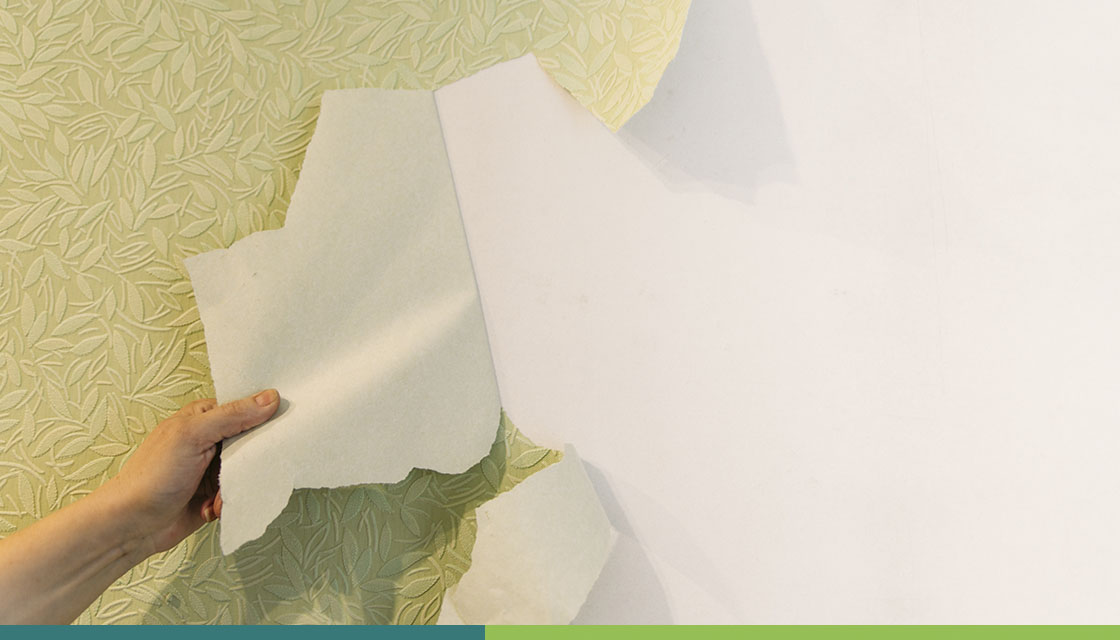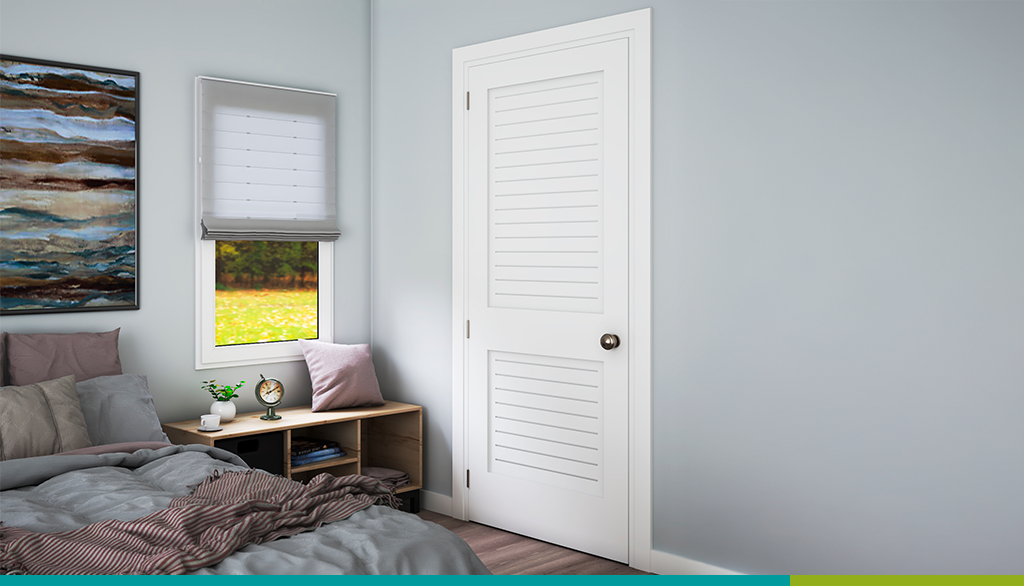Removing wallpaper is a necessary but unpleasant step in transforming an outdated home.
Unlike modern wallpaper, which is like taking a sticker off, most wallpaper in older homes requires a bit of a process to remove.
Whether you plan on painting or repapering, you will absolutely have to remove the old wallpaper. This will not be a glamorous or fun DIY home improvement project. When you are in the thick of it, just remember how great it will look when you can finally repaint those walls!
The Scene of the Crime
Like any home improvement project, you first need to prepare the space. Removing wallpaper is a messy process, so you will want to either remove all furniture from the room, or if the space is large enough, put all of your furniture in the center of the room and cover it with a plastic drop cloth.
This is much like the preparation for a painting project. You will want to cover all the floors with drop cloths, tape over the top of the floorboards, remove switch/outlet plates and cover up the outlets with painter’s tape.
Because you will be using water in the next step, you will need to shut off the electricity to the room. If you need more light to work, you will have to use extension cords and lamps.
Identifying the Criminal
There are two different types of traditional wallpaper. Determining which beast you are dealing with will determine how you move forward.
If you’re lucky, your wallpaper will come right off with little effort. This is strippable wallpaper. If the wallpaper peels off, but leaves a paper backing, then you have peelable wallpaper. If the paper doesn’t come off easily, it will need to be removed with a stripping product. This article will cover the removal of both types of wallpaper.
You will also need to determine what your walls are made of. The two most common contenders are plaster and drywall. Drywall can be damaged if it gets too wet, so keep this in mind as you work!
Remove Strippable Wallpaper
Tools
- Putty knife
- Soap
- Water
- Rags
- Trash bags for spent wallpaper
1 Count your Blessings as you Peel
This is the simplest type of wallpaper to remove! All you have to do is peel and clean.
Use your putty knife to peel back the corner of the paper. Once you have a corner lifted, use your hands to peel the paper from the wall. If you keep your hands close to the wall while pulling, you can avoid tearing the paper into a million tiny pieces. If the paper does rip, use the putty knife to start at another corner and repeat the process.
2 Clean Up
Once you have peeled off the abomination that was your wallpaper, wipe the walls with soapy water to remove any lingering adhesive residue. Remember that drywall does not tolerate being wet for extended periods of time. Allow the walls to completely dry before painting.
How to Remove Traditional Wallpaper
Tools
- Water
- Wallpaper stripper (for DIY options use fabric softener or vinegar)
- Spray bottle, garden sprayer, or paint roller
- Putty knife
- Scoring tool (if necessary)
- Ladder
- Soap
- Rags
- Rubber gloves
1 Mix your Solution
There are chemical options available, but there are two non-toxic DIY solutions you can make to remove your wallpaper. You may even have these items at home already! Fabric softener can be used in hot water in a 1:1 ratio. White distilled vinegar is another great option and can be mixed at a 5:1 ratio of hot water to vinegar.
The hotter the water the better. Make your solution in small batches to keep the water hot. Renew the solution every 15 minutes.
2 Apply Solution
Using your tool of choice (roller or sprayer), saturate a small section of the wallpaper. Working section by section prevents drywall damage. The solution will need a few minutes to permeate before you can start scraping, so plan accordingly!
3 Remove Wallpaper
Use a putty knife to start peeling off the paper. If this proves to be difficult, you may need to score your walls. Scoring creates holes in the paper that allows the stripping solution to get through to the adhesive backing. If your solution is effective without this step, you can skip it.
4 Clean Slate
Once you have removed the wallpaper and paper backing, there may still be some adhesive left behind. Using soap and hot water, wash the walls. Be sure to blot them dry to prevent water damage. You will want to wait a couple of days before repainting to make sure the walls are completely dry.
When All Else Fails
If your wallpaper won’t come off no matter how much elbow grease you use, it may be time to bring out the big guns. You will need to rent an electric steamer from a home improvement store. Gather protective gloves and long sleeves to avoid getting burned by dripping hot water.
1 Steam the Wallpaper
Hold the steamer directly to the wallpaper to help loosen the adhesive. You will want to be very careful with drywall; try not to oversteam and introduce too much water. Use a putty knife to remove the stubborn wallpaper. If need be, you can also use a scoring tool to help the steam get through the wallpaper.
Once the wallpaper is off, you will still need to clean off any residue with soap and water.



